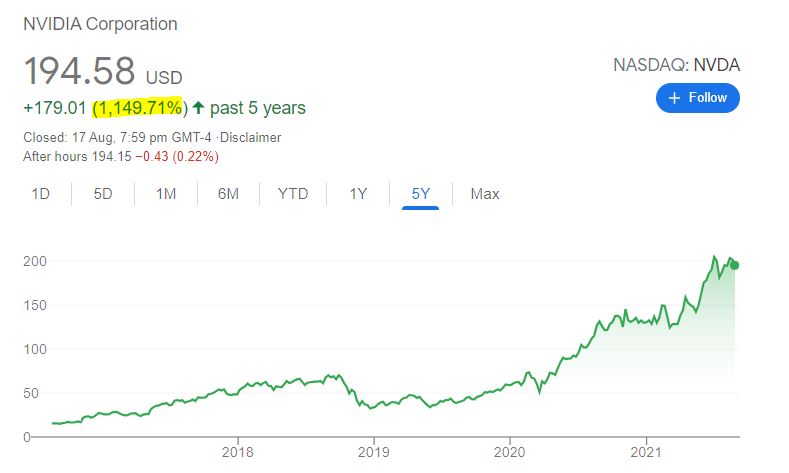
If that increased demand causes the share price to appreciate, then the total market capitalization rises post-split. Often, however, a lower priced stock on a per-share basis can attract a wider range of buyers. When a company such as NVIDIA splits its shares, the market capitalization before and after the split takes place remains stable, meaning the shareholder now owns more shares but each are valued at a lower price per share. For example, a 12000 share position pre-split, became a 48000 share position following the split. This was a 4 for 1 split, meaning for each share of NVDA owned pre-split, the shareholder now owned 4 shares. NVDA's 5th split took place on July 20, 2021.

For example, a 8000 share position pre-split, became a 12000 share position following the split. This was a 3 for 2 split, meaning for each 2 shares of NVDA owned pre-split, the shareholder now owned 3 shares. NVDA's 4th split took place on September 11, 2007.

For example, a 4000 share position pre-split, became a 8000 share position following the split. This was a 2 for 1 split, meaning for each share of NVDA owned pre-split, the shareholder now owned 2 shares. NVDA's third split took place on April 07, 2006. For example, a 2000 share position pre-split, became a 4000 share position following the split. NVDA's second split took place on September 17, 2001. For example, a 1000 share position pre-split, became a 2000 share position following the split. Split, meaning for each share of NVDA owned pre-split, the shareholder now owned 2 shares. The first split for NVDA took place on June 27, 2000. Priem in January 1993 and is headquartered in Santa Clara, CA.NVIDIA (NVDA) has 5 splits in our NVIDIA stock split history database. The company was founded by Jen Hsun Huang, Chris A. The All Other segment refers to the stock-based compensation expense, corporate infrastructure and support costs, acquisition-related costs, legal settlement costs, and other non-recurring charges. The Tegra Processor segment integrates an entire computer onto a single chip and incorporates GPUs and multi-core CPUs to drive supercomputing for autonomous robots, drones, and cars, as well as for consoles and mobile gaming and entertainment devices.

The GPU segment consists of product brands, including GeForce for gamers, Quadro for designers, Tesla and DGX for AI data scientists and big data researchers, and GRID for cloud-based visual computing users. It operates through the following segments: Graphics Processing Unit (GPU), Tegra Processor, and All Other. engages in the design and manufacture of computer graphics processors, chipsets, and related multimedia software.


 0 kommentar(er)
0 kommentar(er)
